Andijan
Andijan
Andijan (or Andijon in the Uzbek language) is a large city in the Uzbek Fergana Valley with over 400 000 people and therefore competing of the title of the second largest city of Uzbekistan with Samarkand and Namangan. It is located in the eastern part of the Uzbek Fergana Valley, next to the border with Kyrgyzstan, 70 km northwest of Osh. Both culturally and linguistically, Andijon is the country’s purest Uzbek city and the best place to observe the Uzbek identity and culture.
Andijan has a wealthy past but the troubled recent history has lead to a situation where only few foreign tourists come to Andijan unless they’re passing quickly en route to Kyrgyzstan. Architecturally there’s not much to see in Andijan since an earthquake in 1902 took all of it. Therefore, most buildings are modern or at least recently restored.
Andijan is a city mostly made for cars, with wide streets where 90 % of the cars are white with yellow taxis and rare old colorful Zhigulis. There is also a big number of Damas mini marshrutkas serving as public transport in the city.
History of Andijan
Andijan was established around the 9th century and was known in the 10th century as the village of Andugan. Andijan’s steady development secured it the full force of Mongol devastation. Genghis Khan arrived when the city was just getting onto its feet, riding through it and razing it back to the ground. There are also some suggestions that Andijan would be the follower of the ancient city of Ershi which was the capital of the Davan state that ruled the Fergana valley around 2000 years ago, which according to Chinese was the home of the heavenly horses. Later this city was named Mingtepa and the ruins can be found about 30 km south from Andijan.
Yet in the late 13th century, Kaydu Khan, great-grandson of Genghis Khan, saw potential in the ashes and rebuilt the town into his capital. This was a good move, as the city became a popular gateway between Samarkand and Bukhara in the west, and Kashgar and Chinese Turkestan in the east. It endured as the capital for the next three centuries, giving its name in Chagatai Turkish to the whole valley.
In 1483 Andijan’s proud son was born, one Zahiriddin Mohammed Babur, great-great-great-grandson of Tamerlane. Having lost his homeland and Samarkand three times, Babur fought his way to India to found the Mogul empire. The khanate of Kokand pushed Andijan out of the attention. The city had several giant monuments dedicated to Babur.
Yet the Russians met strong resistance on their first advance against the town, losing at least 50 men, until General Skobelov secured victory in January 1876. The rebel spirit resurfaced in May 1898 when Nakshbandi Ishan Madali led a three-day revolt, put down after much bloodshed. The Trans Caspian Railway, a harbinger of Russification and modernization, arrived in 1899, three years before an earthquake took 4,500 lives and most of the old town.

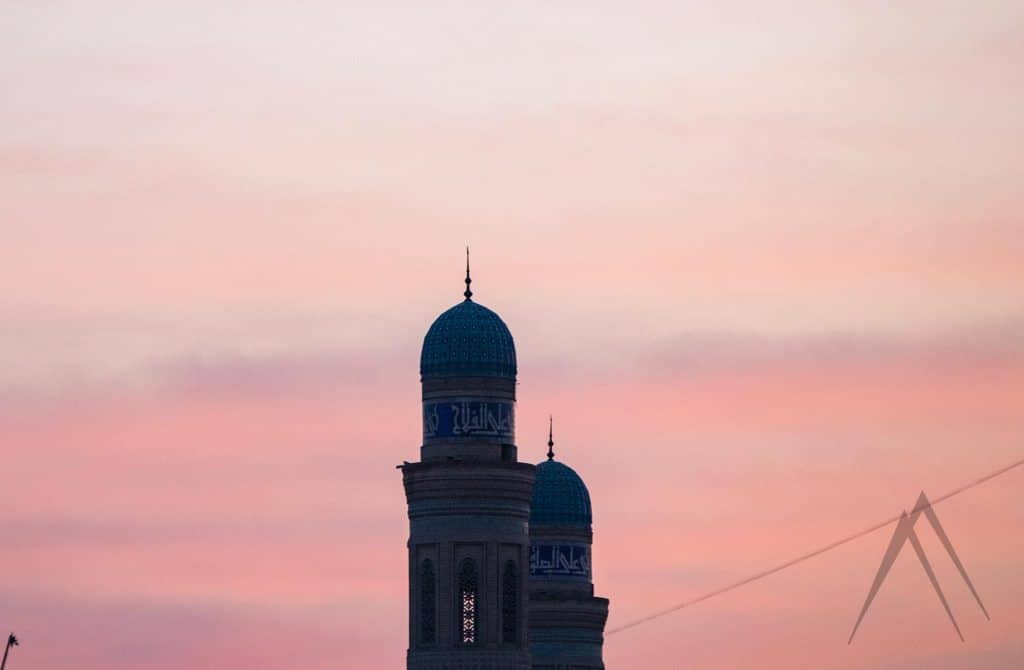
Andijan today is mostly comprised of 20th century construction. As mentioned, an earthquake in 1902 more or less destroyed the Old Town. In the Soviet period, Andijan got industrialized and grew wealthy on the profits of black and white gold: oil and cotton. In the present day Andijan continued to be an industrial city and grew into the capital of Uzbekistan’s most densely populated province.
The growth is still based on oil and cotton: the region is the premier oil producer in the republic and the most intensive cotton farmer in the former CIS countries, with about 75 percent of irrigated land used for cotton.
Andijan Sights
Andijan Musical Drama Theatre
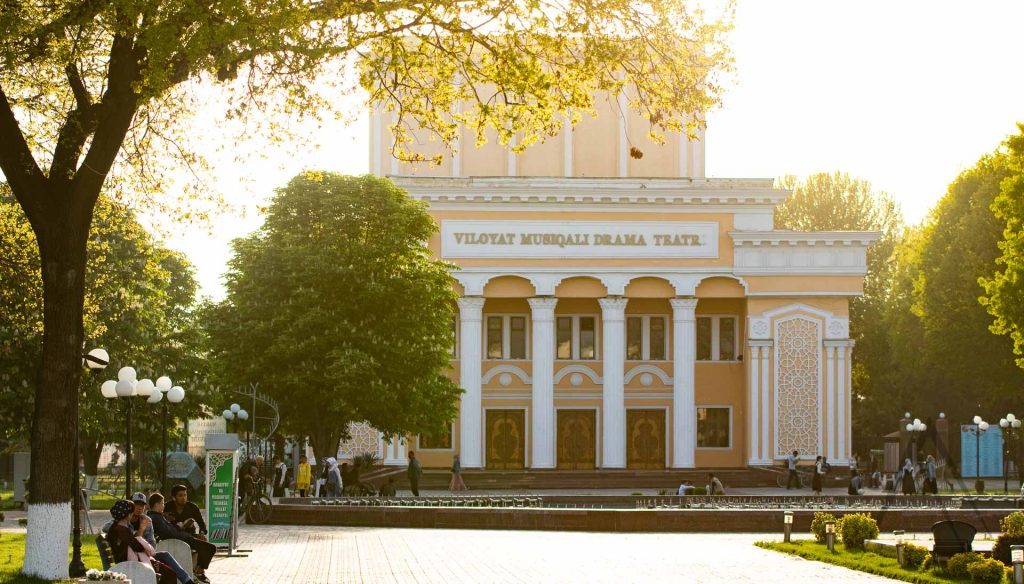
Andijan Puppet Theatre

Andijan Navoi Park
Alisher Navoi park is the centerpiece of the city, located right next to the roundabout in the main square. The park has amusement rides, a stadium and a place to eat ice cream during the hot summer days. At the entrance of the park stands the monument of the Alisher Navoi, the great poet and the pride of Uzbekistan (and Tajikistan as well).
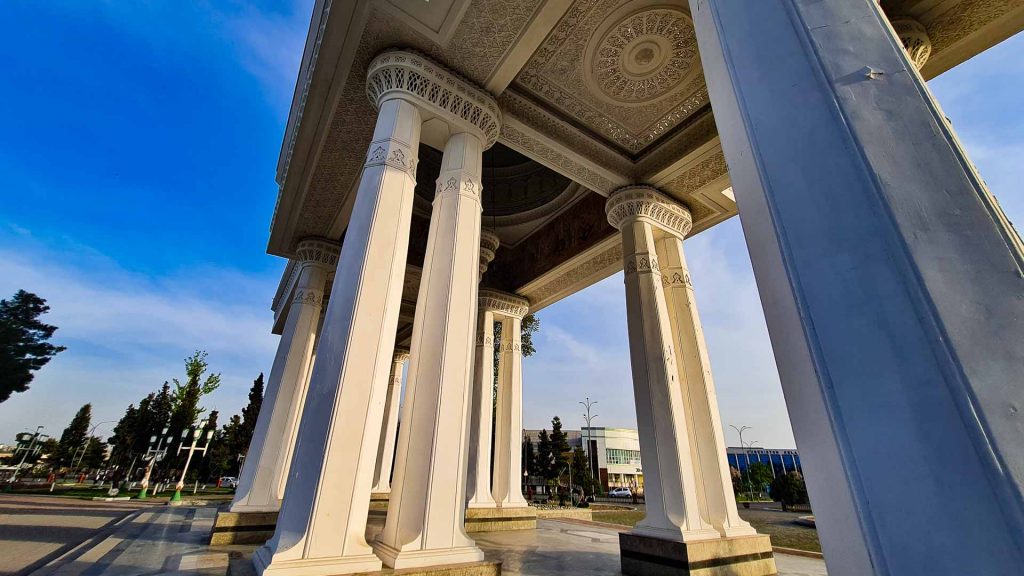
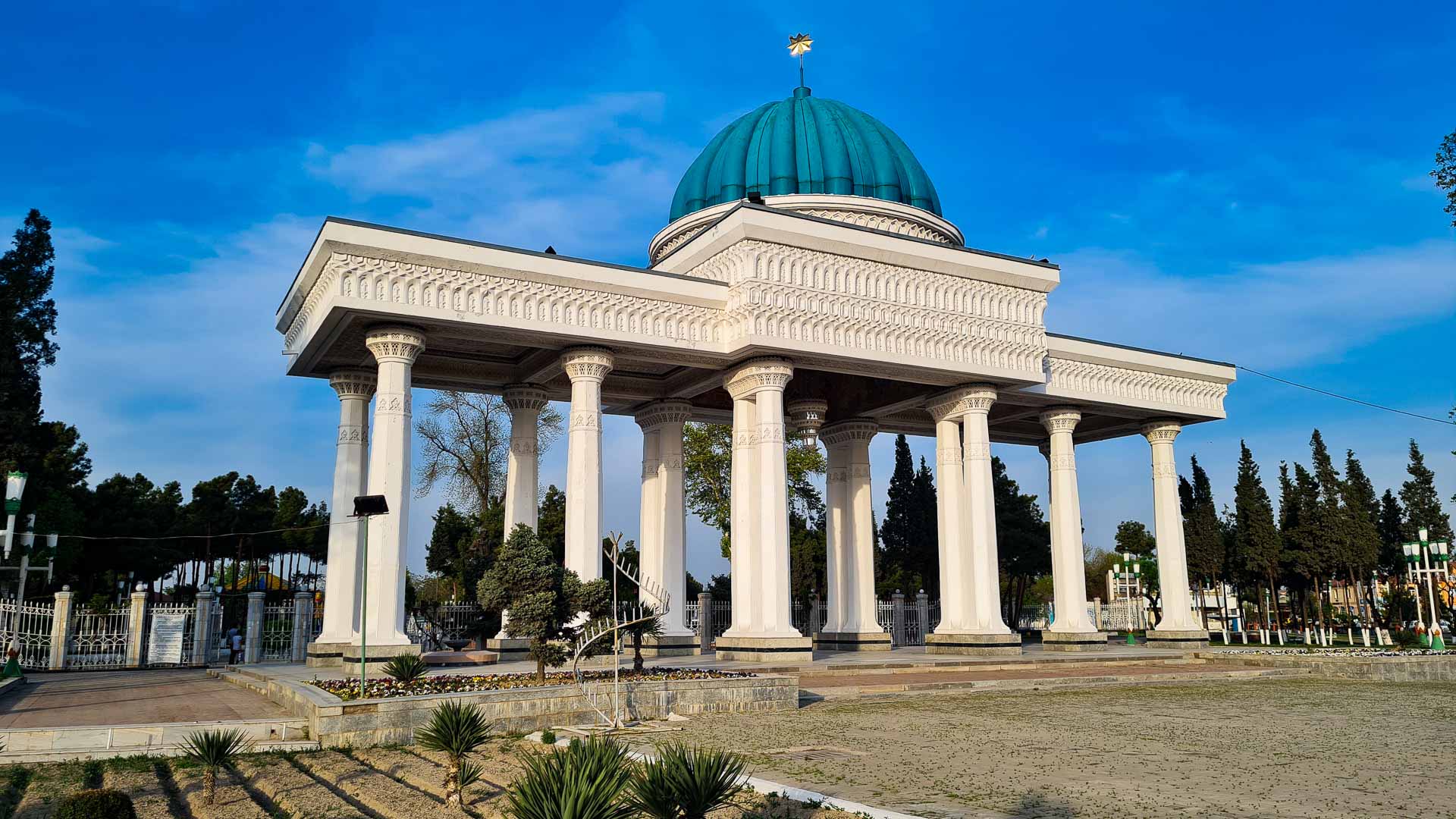
Fergana valley has been flourishing land from the ancient ages throughout the history. During different historical eras, Fergana witnessed strong states which left behind an impressive legacy including monuments of architecture, arts and crafts, various findings of the ancient period, sculptures and works of art.
Andijan regional museum’s collection is divided into many areas: ethnography, fine art, applied arts, archeology and many other. The museum houses a vast collection of exhibits describing the life of the population of the Fergana region in the ancient, antique, medieval periods of the regional history.
The museum collection comprises of over 66 000 exhibits. It includes not only archaeological findings but also the works of contemporary masters of the Fergana region: artists and artisans, who following the traditions of their predecessors, are reviving the ancient craft of the great masters of the Fergana region. The museum exposition is constantly updated. The museum regularly holds various exhibitions, both in Fergana and all over Uzbekistan. Also, each year Andijan Regional Museum, along with other museums of Uzbekistan, displays its best contemporary works in the Gallery of Fine Arts of Uzbekistan.
Andijan Regional Museum
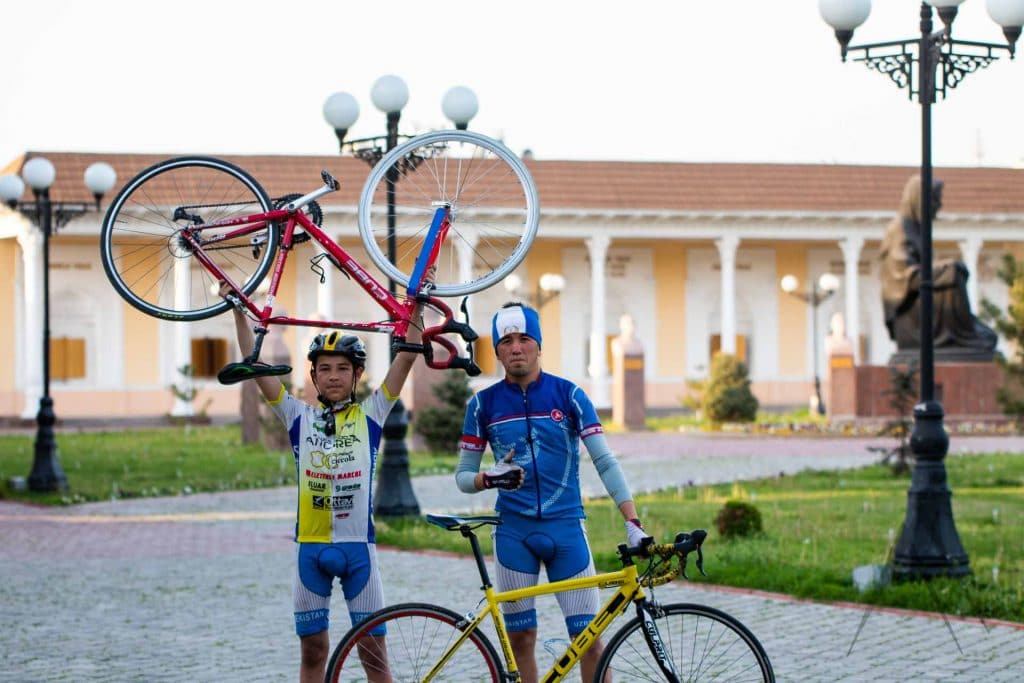

Andijan Devanboy Mosque
Devanboy Mosque is a 19th century mosque with twin minarets and it acts nowadays as the Friday mosque of Andijan. Currently, massive redevelopment is taking place on the streets around the mosque and the mosque itself has been recently restored and some of the work is still ongoing.
During the mass at the time of Ramadan, in the evening time while the sun is setting, tens of small cafes and restaurants prepare dishes by the street opposing the Devanboy mosque. After the mass ends, large hungry crowds pour out to dine and enjoy the evening also partly in the streets where tables have been organized.
Andijan Jami Mosque & Medressah
This 19th century Jome (Friday) architectural complex was originally built by the ruler Muhammadalibay in 1885-1892. It is one of the only buildings to survive the 1902 earthquake. In the 1990s the complex was reopened as a working madrassa. However, it was turned into a museum of local ethnography after a police crackdown on suspected Islamic militants. In the early 2000s, the complex was completely renovated and taken under state protection.
Today this square attracts mostly the youth of the city. It is a nice place to observe the evening life of Andijan, hear the sounds of the mosque inviting for a pray, rent a bike or have an ice cream from the nearest kiosk. It is also very common to see bats flying around here after the sunset.


The complex holds attractive domed halls from three sides creating a calm atmosphere in the busy city. The 700-year-old minaret of the square was saved from demolition in 2016 after an unusual campaign by locals changed the local government’s plans to replace it with a fountain.
Andijan Bobur Museum
Andijan has a collection of small museums, the most significant of which is the Babur Literary Museum. Babur studied in a madrassa on this site and the construction of its massively rebuilt structure. A rose garden retreat from the pounding anvils of Bazernaya Street craftsmen is this former madrassah given over to one of its former pupils.
Destroyed after Babur’s departure, it was restored in the 18th century first to be used as Andijan’s town hall, and then as the Ark Ichy, the residence of the city’s ruling family.

The current museum opened in 1990 and the carefully laid-out garden with formal planting also dates from this time. The exhibits inside the museum celebrate Babur’s poetry and prose liberally sprinkled with reproductions of famous miniatures and paintings of chapters in his story. One story, called “Babur feels ill” presents the conqueror in India, suffering a poison, that the legend suggests was secretly administered by the mother of Delhi’s defeated Sultan. He asked for one of his beloved Ferghana melons to ease his pain. He recognized from first bite the sweet taste and aroma of far-off Ferghana.
Bobur Memorial Park in Andijan
Babur Memorial Park is located 7 km southeast of Andijan, not far from the road leading to Osh in Kyrgyzstan. The park was opened in 1993 to mark the arrival of sand that was brought here from Babur’s Kabul grave. There is a “grave” at the top of the park with some inscriptions telling about Bobur’s life.
The park is made with abundand marble and is built next to an old Soviet time amusement area at the hillside that Babur was fond of visiting during his stay in Andijan. Before he left Andijan for the last time he said to have come here for a final scene of his hometown. The park is nicely organized in Uzbek way with a small museum at the right hand side.
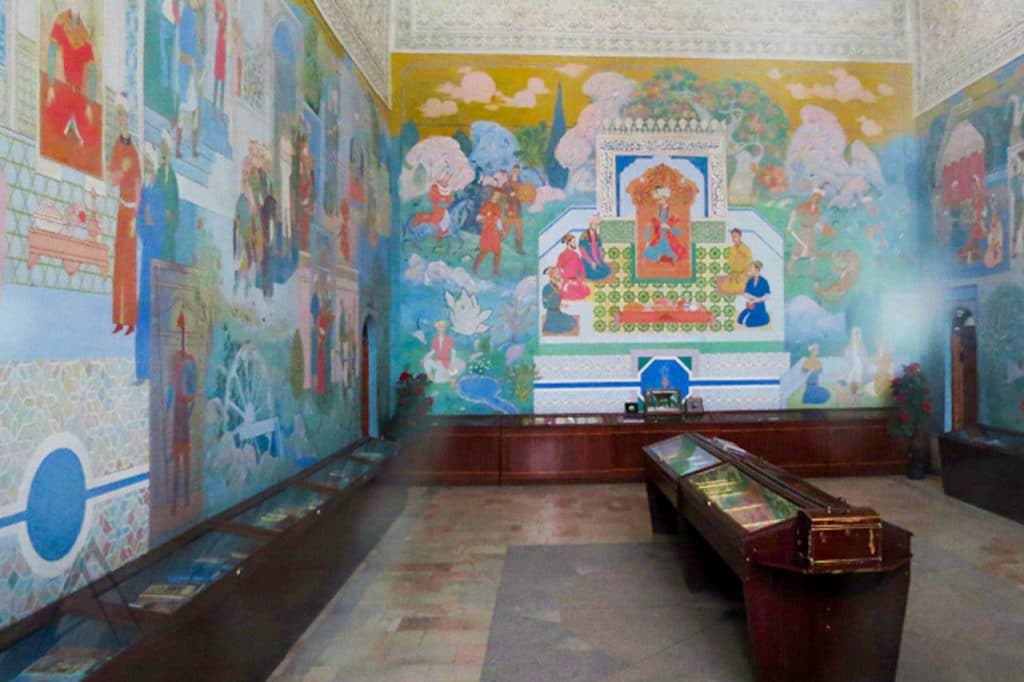
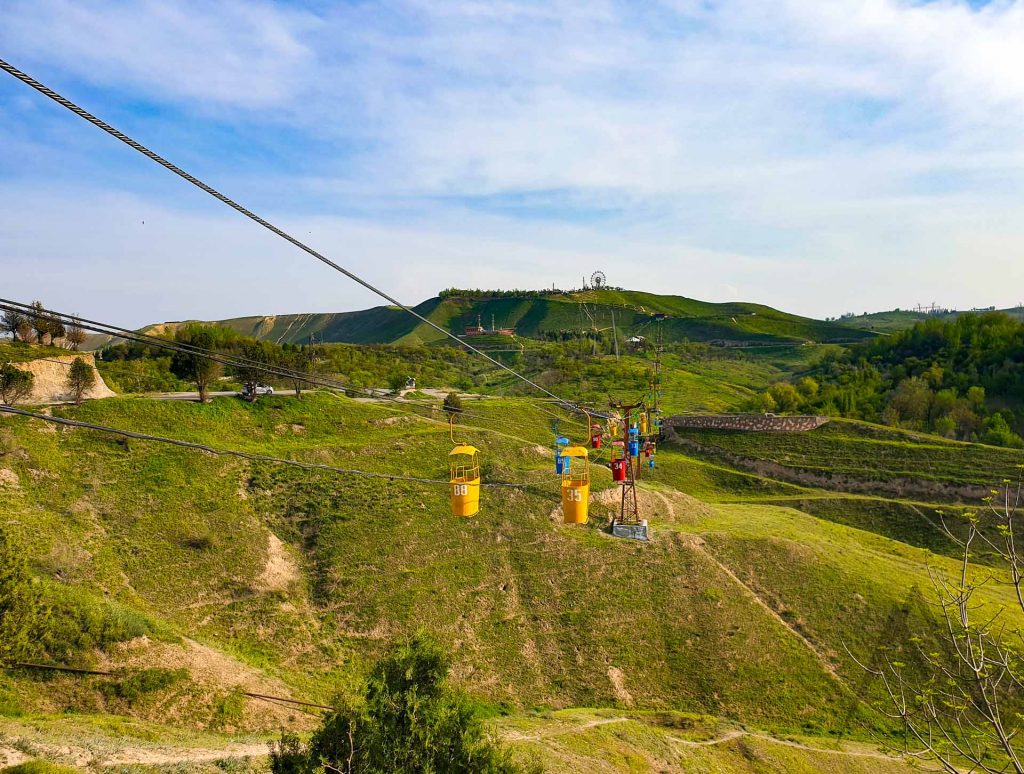
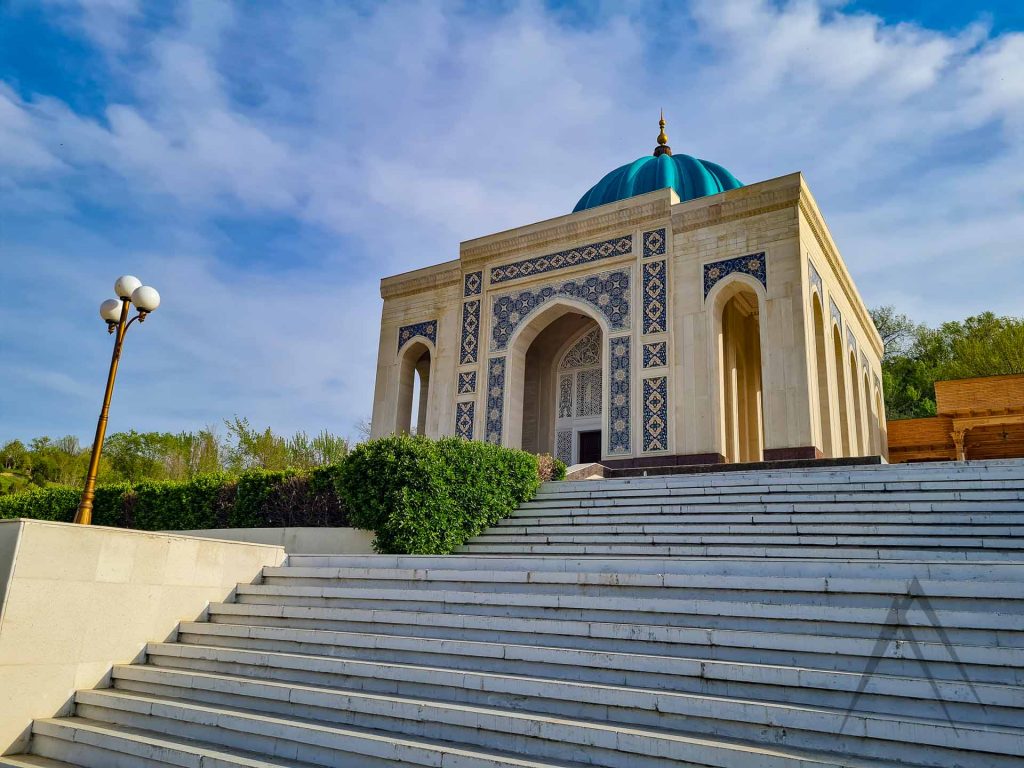
Andijon Quarter of craftsmen
Hidden behind the grand streets, just behind the Eski bazaar, there is a well restored quarter of craftsmen. Here you can feel the spirit of the old eastern bazaar from the old times. Although the quarter been recently restored, it still preserves the atmosphere of the old market with narrow streets and tens or even hundreds of small small shops with own production ranging from metal works to shoemakers and mosque decoration crafters. Definately one of the best sights of Andijan because it shows the modern version of thousands of years old tradition in Fergana valley.
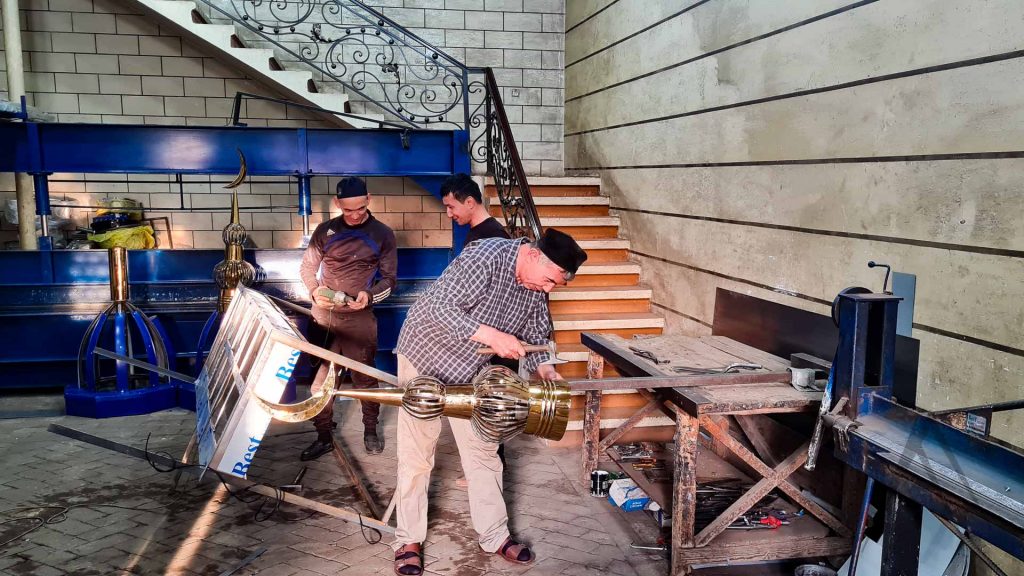
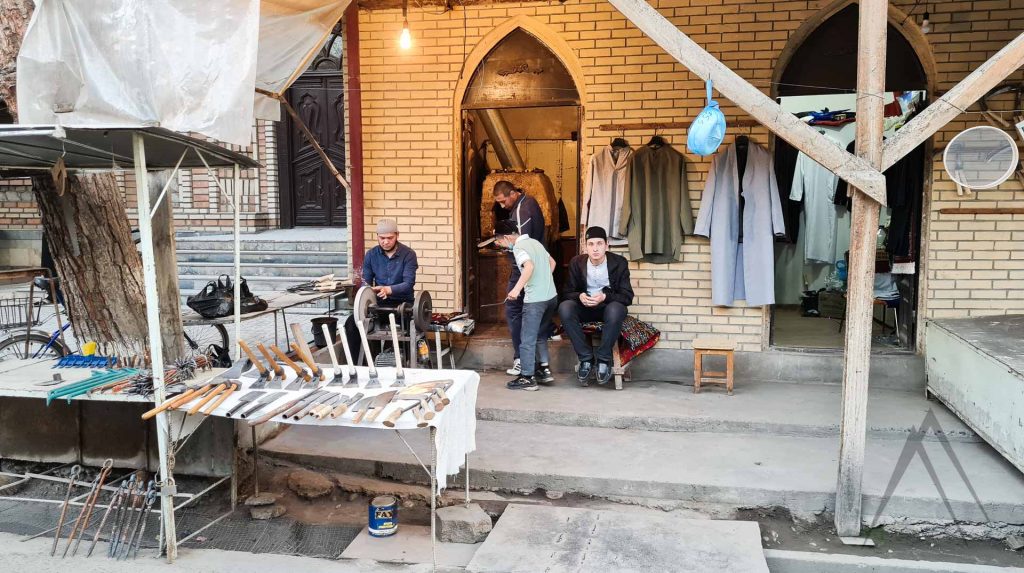
Sighths near Andijan
The shrine of Bibi Seishanbe
Bibi-Seshanba has several meansins like “The queen of Tuesday””, Tuesday grandmother” or “Lady Tuesday”. Widely known to the Sitanian people, it refers to a Persian mystical figure. People believe in Bibi-Seshanba as a holy angel who can save and cure poor and desperate people when called upon.
Bibi Seshanba was traditionally the patroness of happy families and creator of fabrics and textiles as well as tailors and dressmakers. One of the legeds about Asoke Bibi-sa-shemma “The Queen of Tuesday”, a poor little girl stuck among a tyrant family finds a golden shoe. It leads her to falling in love with the prince and saving her from such an intolerable circumstance. The story stronly resembles of western fairytale Cinderella.
The place is sacred, bringing relief to women in their family life, where the childless people come asking for the babies, healing injuries and illnesses and etc. Lastly, the sanctuary is famous for its healing springs called “Kukbulok” and “Kizbulok”. They contains various minerals, macro – and microelements useful for the body. The shrine of Bibi-Seshanba is under state protection as an object of cultural heritage of Uzbekistan.
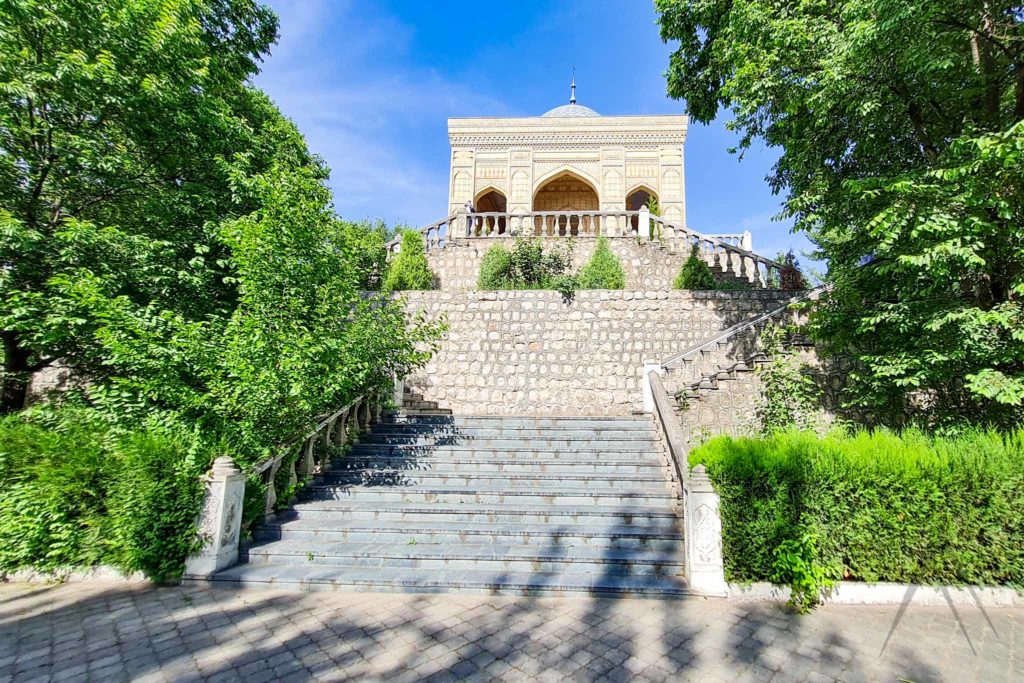
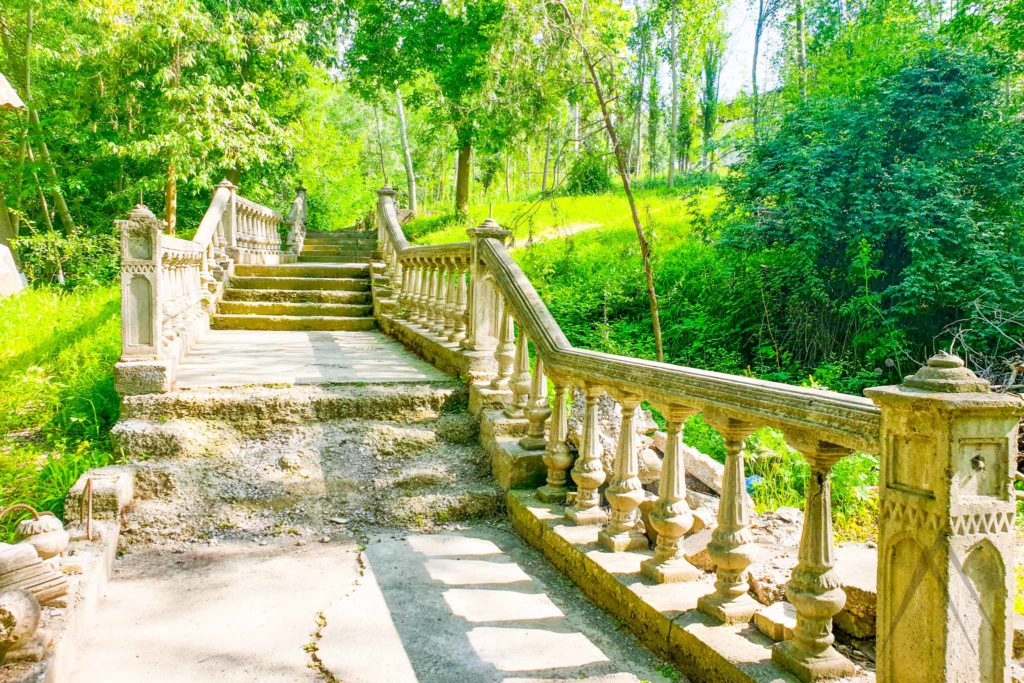
Travel to Andijan
Andijan by Plane
There are four times a week flights from Tashkent to Andijan, plus weekly departures for Bukhara and Urgench. International flights operate straight from Moscow, Krasnoyarsk, and Novosibirsk.
Andijan airport is located about 7 km southwest of the city center.
Andijan by Bus / Taxi
A shared taxi is a quicker way to reach Andijan from Tashkent, compared to the train. From Namangan, shared taxi takes about 1 hour to reach Andijan. From Osh, Kyrgyzstan there are minibusses and taxi options widely available.
Andijan’s main bus station located close to the train station on Amir Timur str. Shared taxis to Tashkent run from the bus station and near Pushkin Park.
SIGHTS AROUND ANDIJAN in Fergana valley
Page updated 25.6.2022